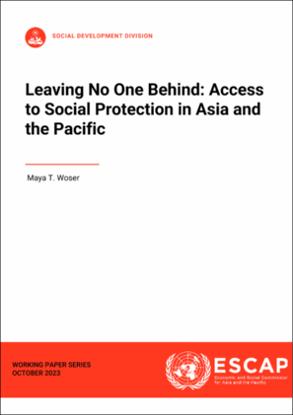Leaving no one behind: access to social protection in Asia and the Pacific
This paper explores trends in social protection in Asia and the Pacific. Drawing on data from the Multiple Indicator Cluster Surveys (MICS) from three representative countries in the region, namely Tonga, Nepal, and Georgia, the paper uses Classification and Regression Trees (CART) to identify which groups are least likely to be aware of or have received social protection programs, i.e., the furthest behind groups. Results underscore significant variation within and across countries.
Overall, awareness of social protection programs is high while the receipt of social protection is much lower. Female-headed households tend to have higher rates of receiving social protection. Wealth of the household and residence type (urban versus rural) also explain variation, with higher coverage amongst poorer and rural households. Coverage by specific programs within countries also varies greatly. This paper aims to inform policymakers and researchers about descriptive trends in awareness and the receipt of social protection across Asia and the Pacific.


